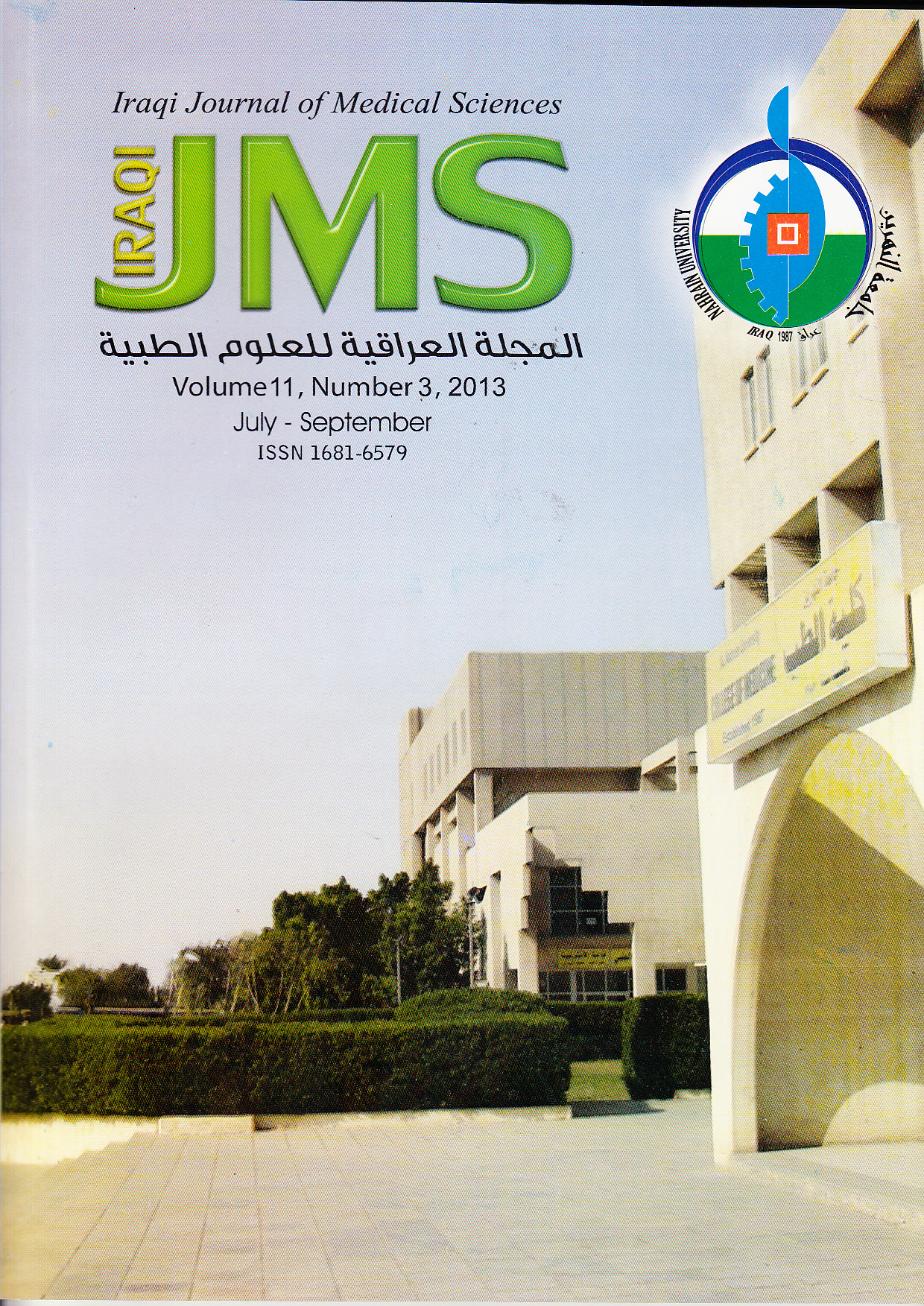|
Vol. 11 Issue 3 July - September / 2013
Published on website | Date : 2016-03-29 19:33:46
CERVICOVAGINAL SMEARS’ CLASSIFICATION USING THE BETHESDA SYSTEM (TBS) 2001: A CYTOPATHOLOGICAL STUDYToqa J. Chkhaim, Husam H. Ali, Liqaa R. Mosa, Kifah H. AbdalghafourAbstractBackground:The Bethesda System (TBS) aims to simplify cervical smear report and make it more reproducible and facilitates the communication between pathologist and clinician.
Objectives:To evaluate 2001 Bethesda System of cervicovaginal smear classification in the diagnosis of different pathologies seen in women having different gynecological complaints. Methods: A prospective study of cervicovaginal smears that obtained from 360 female patients (aged 15-75 years) attending Gynecological Consultation Clinic in Al-Imamian Al-Kadhimiyian Medical City – Baghdad- Iraq for the period from November 2011 to April 2012. Smears were stained by Pap stain to evaluate according to Bethesda system 2001. Results:A total of 360 cases were evaluated, 317 cases (88%) had satisfactory smears for evaluation. 246 cases (68.3%) had negative cervical smears for intraepithelial neoplasia (TBS 2001). Seventy one cases (19.72%) had abnormal cervical smears (AS). Minimal cervical smear abnormalities (ASC-US, ASC-H, AGC, LSIL), includes (53) cases (74.64% of AS). HSIL (CIN- II, CIN-III, & carcinoma in situ), includes (18) cases (25.36% of AS). Conclusion:Pap smear is a screening test, it is not a diagnostic test; positive result indicates that there may be a problem and that further diagnostic procedures must be done. The Bethesda system is of validity in providing a uniform format for cervical cytology report. Key words:Pap smear, cervical intraepithelial Neoplasia (CIN), LSIL, HSIL, 2001 Bethesda System (TBS). Full-text |
Some tools below are only available to our subscribers or users with an online account |
 |
Please wait until the current process completes ... |




